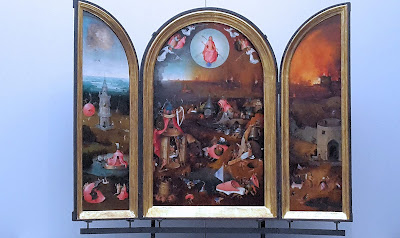Let us never forget the Holocaust
UN International
Holocaust Remembrance Day kicked off the 2019 events for the New Zealand World Peace
Bell in Christchurch Botanic Gardens. We (NZ World Peace Bell Association) willingly
provide the Christchurch venue for the New Zealand Holocaust Centre. It happened about three years ago when Holocaust
Centre people approached our member David Bolom-Smith saying they would be keen
to hold a remembrance event in Christchurch if a venue was available. David
considered the event fitted with our WPB ideals. As founder of the NZ WPBA, I agreed.
UN Holocaust Day has since been included in our Calendar of bell-ringing
events. The third Holocaust event in Christchurch happened on Sunday January
27.
January 27 is the Remembrance Day
unless the day falls on a Saturday, the Jewish Sabbath.
The NZ Holocaust Centre provides the programme. Of the 50 plus people
attending this year, about 12 were WPB members. Amongst special guests were;
Andrew Turner, Deputy Mayor of Christchurch, Duncan Webb, MP for Central Christchurch and the Very Reverend Lawrence
Kimberly, Dean of the (transitional) Anglican Cathedral.
Special quests had to light one of six candles, each one representing 1 million
of the innocent, mostly Jewish, people murdered owing to their race.
Deputy Mayor, Andrew Turner, gave
a brilliant address which was largely echoed by other speakers. . As individuals we do not make government
policy. But we do need to stand up to racism, bigotry, anti-antisemitism and
anything else that divides people. Racism is frequently a by-product of a
government's immigration policy.
We need only see what is happening in many countries in an effort to
divide people. US President, Donald Trump, likely leads the pack with his blatant
support of white supremacy and his proposed border wall to keep Mexicans out.
In the UK, Brexit is largely about stopping the free movement of people between
Continental Europe and Britain. Neo Nazism is infiltrating politics in many
countries. Neo-Nazi demonstrations have caused havoc in Melbourne, Australia.
One member of the Federal Government shamefully attended, even claiming his
$3000 travel expenses from taxpayers.
In many countries, groups are targeted owing to their race and, or,
religious identities.
This is at a time when the British
newspaper Guardian reports one in 20 people in Britain do not believe the
Holocaust even happened. Another eight percent say the scale of the Holocaust
is exaggerated. Figures are from a poll
commissioned by the Holocaust Memorial Day Trust, a government-funded
organisation established to educate about the Holocaust. Figures echo findings
from similar surveys carried out in seven European countries in November 2018.In the US nine per cent said
they were unaware of the Holocaust. This is not to conclude those surveyed were
Holocaust deniers. But people with little awareness of what happened can
swallow myths and distortions. Most people agree there is a need for more
education and consequently awareness of the Holocaust. It is no secret that
those most ignorant of history are most likely to repeat it. On a positive
note, Holocaust centres, established in many countries, initiate events to mark
UN International Holocaust Remembrance Day.
At earlier Christchurch events a police presence was noticed. They kept
their distance from the WPB venue and, I noticed, were enjoying chatting to
children in the Christchurch Botanic Gardens. Maybe a worthy PR opportunity for
Christchurch police officers.




























